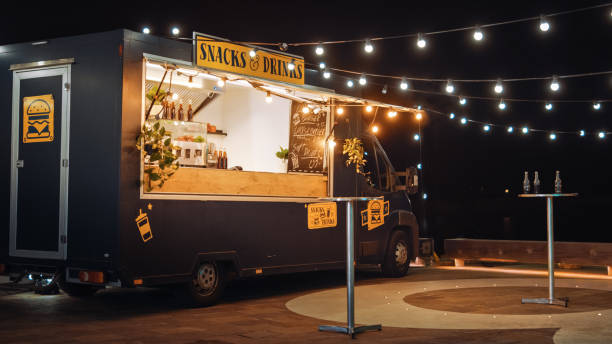Breaking into the food truck industry is a popular way for first-time food entrepreneurs to try their hands at serving delicious food to hungry patrons. Opening a food truck can be a lucrative business when done right. Running a successful mobile kitchen requires creating innovative menus, producing consistently high-quality food, and working long hours to out-serve competitors. Take a look at some helpful tips when preparing to open a mobile kitchen.
1. Carve a niche and create a menu.
The key to any successful business model is to identify your niche and cater to your target audience. People commonly associate food trucks with culinary specialties or specific menu items. A mobile kitchen doesn’t have the same ambiance as a brick-and-mortar restaurant. The innovativeness of your menu and the quality of your food is what will keep customers coming back.
2. Claim your territory.
The cool thing about mobile kitchens is that you can change locations when you want, so long as you operate in neighborhoods that allow this type of business. Roaming food trucks follow a consistent schedule so patrons know when and where to find them. In-residence trucks operate at the same location for a period of time and change locations every few months or even years. If you plan to operate an in-residence food truck, research neighborhoods and choose the best location for your business model.
Since there’s no storage space in a mobile kitchen for extra kitchen equipment and supplies, you’ll need to find a storage unit. Storage units come in a range of sizes and prices and offer different amenities. Find Self Storage has the largest online marketplace of storage facilities in the country. At https://findselfstorage.com, you can easily find climate-controlled storage units with 24-hour access in secure locations perfect for storing appliances, catering supplies, wine, kitchen equipment, documents, and more.
3. Consider your technology needs.
A mobile kitchen has technology needs just like a brick-and-mortar restaurant. You’ll need to choose a flexible Point-of-Sale (POS) system that reliably works wherever you go. Look for something with offline capabilities just in case your Wi-Fi is uncooperative during peak hours. Another technology needs you’ll want to prioritize is your online presence. The sooner you start building a social media presence, the sooner you can start building buzz.
Keep your patrons updated with your locations, hours, daily specials, and new menu items by posting quality content on Facebook, Instagram, and Twitter. Find fun ways to engage with your patrons and encourage them to spread the word about your brand. Social media photo contests with free food prizes are a great way to get more people to your food truck.
Running a mobile kitchen restaurant comes with plenty of advantages, such as tax benefits, the ability to create an innovative menu, a choice of vendors and crew, and the luxury of changing locations at will. As Layout Scene points out, mobile kitchens are great marketing opportunities. They are essentially billboards on wheels that you can brand with your logo, design, and menu. This free advertising is a great way to reach potential customers as you travel from location to location.
Mobile kitchens range in size from 10 to 26 feet long and 7 feet wide. The size of the food truck determines where you can park and what events you can vend, such as city streets, fairs, block parties, and parks. The size of your mobile kitchen also affects the size of your menu. You have a choice of payment options when operating a food truck. Cash is a popular payment method that most customers are accustomed to, as well as credit and mobile payments.
Operating a successful mobile kitchen starts with a unique business model built on a niche offering. Determine whether you will operate a roaming or in-residence truck, and make sure you can keep up with your technology needs.

